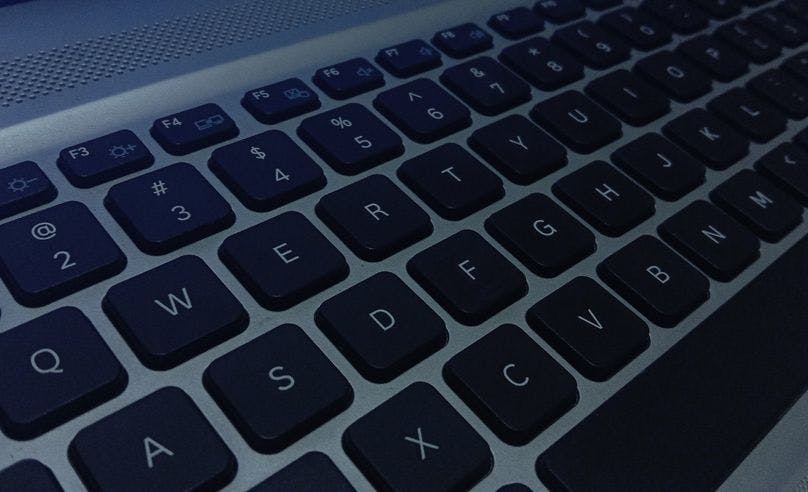QWERTY Typing Lessons: Take Your Typing Skill to The Next Level

Do you feel frustrated when you are unable to type quickly enough? Is it your goal to become a faster and more efficient typist by unlocking your typing potential? You have come to the right place to find the answers to your questions. Yes, the answer is QWERTY typing lessons.
Whether new to typing or aiming to enhance your typing skills, the QWERTY layout will be a game changer. Do you want to know where you should start? To practice the QWERTY typing lessons, you should understand the QWERTY layout.
This article examines QWERTY typing lessons and more advanced techniques, including hand placement. Let's get started.
Special Note: If you are not acquainted with QWERTY or have little knowledge, just go through the full article. if you are an expert in this keyboard or have enough knowledge, Go Here directly to explore a bunch of effective typing lessons.
Guide to QWERTY Layout:
QWERTY keyboards are commonly used on typewriters and computers in countries that use Latin alphabets. The QWERTY means the first six letters on the upper row of the keyboard.
The purpose of creating a QWERTY layout is to stop the typewriter keys from getting stuck, but then it becomes standard for modern keyboards.
To maximize efficiency, common letter pairs are placed on opposite sides of the keyboard or between the two hands of the typist.
Proper Hand Positioning For Unlocking QWERTY Typing Lessons:
The key element to unlocking your QWERTY typing lessons is the correct placement of your hands. Place your left hand on the keys A, S, D, and F while putting your right hand on the keys J, K, L, and (;).
Your index fingers should rest on the F and J keys with slight bumps to ensure a good starting position.
Finger Placement For QWERTY Layout:
In the QWERTY layout, each finger is responsible for each key so that it doesn't affect your speed and efficiency, and you can complete your QWERTY typing lessons immediately.
- The right index finger is used for the U and M keys and can also reach the Y, H, and N keys. Similarly, the left index finger is used for the F key and can move up to get the R key, down for the V key, and across for the T, G, and B keys.
- The middle finger of the right hand rests on K, but it moves up and down to type I and (.).
- The left hand's ring finger sits on S but moves up for W and down for Z.
- The left pinky finger is placed on the A key and reaches for Q, while the right pinky is on Enter and goes for the (.)and (/) keys.
Practice Drill:
You can achieve a high score in QWERTY typing lessons with regular practice. So, consider taking a start with simple words and phrases. Make sure that you have placed all the fingers correctly on each key. Always focus on both speed and accuracy.
- Type all the alphabets from A to Z using the correct finger positions.
- Type the home row keys (A, S, D, F, J, K, L, (;)) repeatedly.
Take your time with the speed; your primary target should be to achieve accuracy. You can practice typing using the field at the top of the keyboard.
QWERTY Typing Lessons:
Once you have practiced the basics, you can start taking the QWERTY typing lessons on many websites to enhance your typing speed and accuracy. Practicing these QWERTY typing lessons plays a vital role in clearing your typing tests.
Ensure your words per minute for these typing lessons could be 40 with 95% accuracy. You can also use advanced typing methods like touch typing or blind typing after becoming more proficient.
The touch typing means you have to type without looking at the keyboard. In blind typing, you have to type without looking at the screen. These techniques can enhance your accuracy and speed.
Benefits of Using QWERTY Layout:
By using the QWERTY layout, you cannot only increase your typing speed and accuracy but other benefits too.
- The significant benefit of the QWERTY layout is that it is easy to learn which is reliable, and widely used. Popularity and availability make it a convenient choice for most users.
- QWERTY layouts develop muscle memory, which increases typing speed and reduces the need to look down at the keyboard.
Conclusion:
QWERTY typing lessons can be unlocked by familiarizing yourself with the QWERTY layout. This layout is easy to learn and use; each finger is specified for each key, reducing finger movement and increasing your typing speed and accuracy.
Using the QWERTY layout, you can also save yourself from wrist and hand strain using proper hand and finger techniques. You can practice the QWERTY typing lesson by using the free online resources. So why not start practicing the QWERTY typing lessons today and see the difference it can make in your productivity and typing skills?
